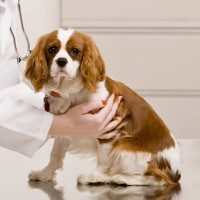Did you know that dogs can get allergies, just as people can? Fido can have reactions to a wide variety of substances, such as pollen, mold, and dust. Allergies can appear at any point in Fido’s life, and sometimes develop unexpectedly, and they are definitely no more fun for pets than they are for people! Here, a Town N Country vet discusses allergies in dogs.
Treatment
Although allergies are not curable, they can be treated. Treatment options may include medication, special diets, and/or specific care instructions. If you think your canine friend may have allergies, schedule an appointment with your vet for testing. Once the culprit has been identified, your vet will be able to discuss various treatment options.
Common Allergens
As mentioned above, our furry friends can be allergic to many different things. Some of the common ones are plants, mildew, dust, dander, pollen, and trees. Your pooch could also have allergic reactions to something in his food or shampoo, or to strong fumes, like cigarette smoke.
Symptoms
The signs of allergies in dogs can vary widely, depending on both the dog and the allergen. Itchiness is a common one. Allergies can also cause various skin problems, such as redness, flaking, and hot spots. Your canine buddy may sneeze, snore, or burp, and could have flatulence. Red, runny eyes are another symptom. Allergies can also be the culprit behind stubborn, recurring ear infections. In some cases, they can cause vomiting or diarrhea. Occasionally, dogs have more serious symptoms, such as fainting, seizures, or comas, though fortunately this is quite rare.
Home Care
In addition to getting Fido proper veterinary treatment, there are some things that you can do at home to keep him more comfortable. Regularly vacuuming and dusting will remove dust, pollen, and dander from your home. A good air purifier will also help. Wash your canine pal’s bedding and clothes regularly, using hot water, hypoallergenic detergent, and your hottest dryer cycle. Another thing that may help is to start monitoring pollen counts. Limit Fido’s outdoor time when levels are high. Last but not least, wipe your furry buddy’s paws and belly down with a damp cloth after he’s been outside, to get pollen and dander out of his fur.
Please contact us, your local Town N Country pet hospital, for all of your dog’s veterinary care needs. We are happy to assist!







